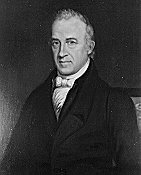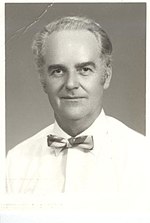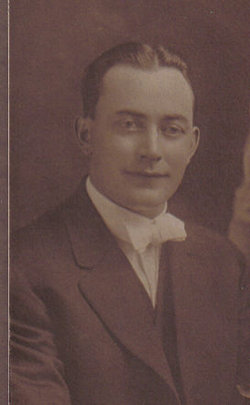Arthur Livermore
Arthur Livermore (* July 29, 1766 in Londonderry, Rockingham County, New Hampshire; † July 1, 1853 in Campton, New Hampshire ) was an American politician. Between 1817 and 1821, and between 1823 and 1825, he represented the State of New Hampshire in the U.S. House of Representatives.
Career
Arthur Livermore was the son of Samuel Livermore (1732-1803), who represented 1789-1802 the state of New Hampshire in both chambers of Congress. Arthur's brother Edward (1762-1832) was sitting 1807-1811 for Massachusetts in the U.S. House of Representatives. Arthur Livermore received his education from his parents. After studying law and qualifying as a lawyer, he began in 1792 to work in Concord in his new profession. A year later he moved to Chester.
Politically, Livermore was a member of the Federalist Party. Between 1794 and 1795 he was a member of the House of Representatives from New Hampshire. Thereafter, he served from 1796 to 1798 as a prosecutor in Rockingham County. Between 1798 and 1809 he was Associate Justice of the Superior Court of the State of (now Supreme Court ) and from 1809 to 1813 he was Chief Judge of the same court. In the presidential election of 1800 he was an elector of the Federalists. In the years following Livermore joined the Democratic- Republican Party.
In the congressional elections of 1816, which were held all across the state, he was a candidate of his new party for the fifth parliamentary seat from New Hampshire in the U.S. House of Representatives in Washington DC selected. There he met on March 4, 1817 the successor of Daniel Webster. After a re-election in 1818, he could remain until March 3, 1821 in Congress. During this time he was chairman of the committee that dealt with the postal service (Post Office and Post Roads ). He was also a member of the Committee, which controlled the expenditure of the Post Ministry. In the elections of 1820 he lost to Thomas Whipple. In this time of the Missouri Compromise worked out by Henry Clay falls. After that, the state of Maine was newly established. There slavery was prohibited, while she was in the state of Missouri, which was also added at this time to the Union allowed.
In the years 1821 and 1822 Livermore sat in the Senate of New Hampshire. From 1822 to 1823 he was judge of the probate court in Grafton County. During these years, his Democratic- Republican Party began to split into several wings, which led to its dissolution and a redesign of the American political landscape later. Livermore joined the faction led by John Quincy Adams and Henry Clay, who stood in opposition to the followers of Andrew Jackson. In the congressional elections of 1822, which were also held all across the state, Livermore was elected as a candidate of the Adams - Clay Group for the second parliamentary mandate his state again in the Congress. There he entered on March 4, 1823, to succeed Nathaniel Upham. But since he resigned in 1824 to further candidacy, he was able to complete only one term in the House of Representatives until March 3, 1825.
Between 1825 and 1832 Livermore was presiding judge of the appeal court of his state. Since 1827 he lived in Campton. From 1808 to 1826, he was curator of the Holmes Plymouth Academy. Arthur Livermore died on 1 July 1853 in Campton.








:format(jpeg):mode_rgb()/discogs-images/A-3852690-1401567342-1898.jpeg.jpg)

